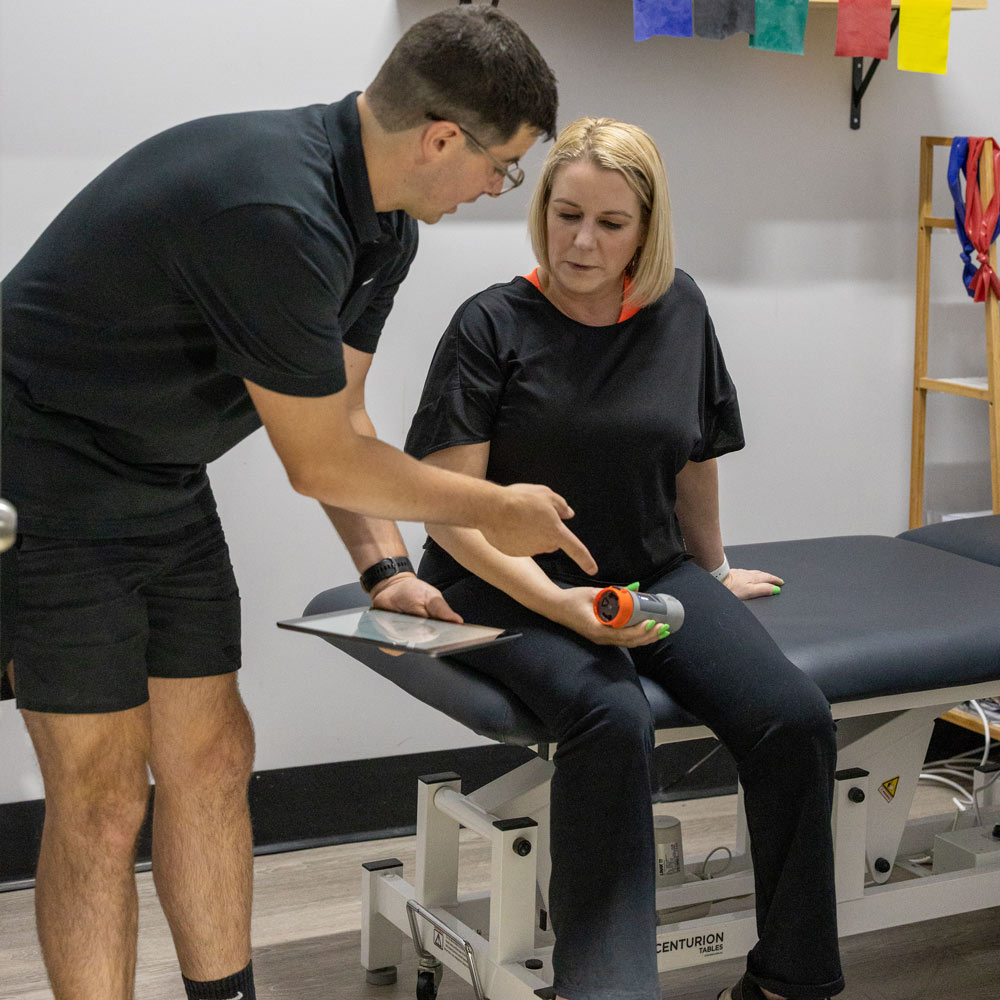Rehabilitation is an important process that aims to restore movement, strength, and power from injuries or surgeries. To maximize the effectiveness of rehabilitation programs, measuring outcomes becomes an essential aspect, allowing the client and clinician to collaborative set goals, timelines, and re-measure the effectiveness of the program. Measurements of outcomes also allow other clinicians, including GP’s, surgeons, and occupational therapists to stay informed with the progress of the client. Here are a few important points and examples about measuring outcomes.
Collaborative Goal-Setting: Outcome measurements provide a foundation for collaborative goal-setting between clients and clinicians. By discussing and understanding the measurable outcomes, both parties can work together to establish specific, attainable, and time-bound goals. This collaborative approach ensures that the rehabilitation program aligns with the client’s aspirations and helps them stay engaged and committed to their recovery journey.
Enhancing Compliance and Buy-in: Measuring outcomes enhances client buy-in and compliance with the rehabilitation program. When clients see tangible results from their efforts, they become more motivated to adhere to the prescribed exercises and activities. Outcome measurements create accountability and demonstrate the effectiveness of the rehabilitation program, increasing the client’s trust in the process and their commitment to achieving optimal outcomes.
ACL Rehabilitation – Load Differences Using VALD ForceDecks: In ACL rehabilitation, measuring outcomes is crucial for assessing asymmetries and identifying potential issues in technique or guarding. For example, using technologies like VALD ForceDecks, clinicians can measure left to right leg differences in load during a squat, whilst also visually viewing the movement. A difference of over 10% is considered significant and may indicate imbalances or compensatory patterns. This objective measurement helps guide treatment decisions, focusing on correcting technique and improving load distribution for better functional outcomes within the early stages of rehabilitation.
Post-Shoulder Surgery – Range of Motion and Strength Using VALD Dynamo: Post-shoulder surgery, outcome measurements play a vital role in monitoring range of motion and strength improvements. With tools like VALD Dynamo, clinicians can assess and compare the range of motion and strength between the affected and unaffected sides. Periodic re-measurements allow tracking progress and identifying any areas that need further attention or modification in the rehabilitation program. These measurements provide tangible evidence of improvement, boosting client confidence and compliance.
Measuring outcomes in rehabilitation is a fundamental aspect that benefits both clients and clinicians. It provides clients with a clear understanding of their progress, allows collaborative goal-setting, and fosters buy-in and compliance. Recent advancements in technology, such as VALD ForceDecks and Dynamo, enable objective measurements for specific conditions like ACL rehab and post-shoulder surgery, providing clinicians with valuable insights to tailor treatments effectively. By embracing outcome measurements, rehabilitation programs can be optimized, leading to improved outcomes and enhanced quality of life for individuals on their path to recovery.


